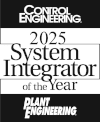Barnum Mechanical Inc. hosted an interview with the CEO of The Better Meat Co. to discuss how Barnum Mechanical and E Tech Group supported their new production facility.
Many food processors create a proof of concept in several sizing stages before they build a full-scale processing facility. Designing an automated processing facility requires flexibility in the design and the ability to constantly improve the system with things discovered through research and development efforts. This is the story of how The Better Meat Co. partnered with Barnum Mechanical Inc. and E Tech Group to design, build, and automate a full-scale processing system at The Better Meat Co.’s new mycoprotein fermentation facility in Sacramento, California. Industry partner Barnum Mechanical teamed up with E Tech Group to support an expedited completion timeline.
Solution
The Better Meat Co. needed a full-scale processing system built from the ground up. The first step was understanding The Better Meat Co.’s current laboratory operations and what they were expecting to do in the new industrial scoped system. The project team assessed existing equipment, current system requirements, and collaborated with various stakeholders to best design the full-scale processing system, keeping alternative meat processing standards and scalable performance capabilities top-of-mind. “We have never built a fermentation plant before, whereas Barnum and E Tech Group had.” explains Paul Shapiro, CEO of The Better Meat Co. “They had a lot of experience that was very helpful in informing the decisions that we would end up making. And many of these decisions I don’t think would have been so simple for us to figure out on our own . . . They were partners with us in helping us decide what type of a design we wanted in the first place.”
The project team leveraged their expertise in automated control systems and process design to create a custom solution. The project team connected new Allen Bradley ControlLogix PLCs to Inductive Automation’s Ignition HMI application and SCADA software over an Ethernet switch. During this phase, multiple experts from both engineering firms collaborated and programmed simultaneously. The project team accomplished a software redundant control system that was capable of developer remote access support, redundant databases, recipe controls, historic data logs, and interactive reports. All of this supported The Better Meat Co.’s ability to control efficiency, remain flexible to meet new production cycles, and make real-time, data-driven decisions.
“We need lots of flexibility and variability in our facility because everything that we’re doing on our pilot scale is designed to inform what we may do at our future fermentation facility. And so, we don’t want just one process that we could lock in here.” added Shapiro. “What we’ve done with Barnum and with E Tech Group is to create a plant that actually has a lot of flexibility in terms of what we’re able to do . . . The system that Barnum and E Tech Group helped to build allows us to experiment, simultaneously with different types of feedstocks so that we can sterilize different media in order to run different types of fermentations.”
In a few short months, the automated system was capable of successfully developing The Better Meat Co. products on demand. “. . . If you can afford to add automation, it’s a good idea to do it,” endorses Shapiro when asked his thoughts on the value of automation. To date, the new system continues to support The Better Meat Co. and has not experienced a technical outage since its deployment.
Barnum Mechanical and E Tech Group enjoyed the opportunity to partner on this project to deliver a flexible system that is scalable for The Better Meat Co.’s growing operations. To learn more about the project and the customer’s satisfaction, we welcome you to watch the interview with Paul Shapiro, CEO of The Better Meat Co.
Congratulations to our client, UPSIDE Foods on receiving FDA approval. We know this is something you’ve been diligently working towards, and we can’t what comes next. UPSIDE Foods, the leading cultivated meat, poultry and seafood company, became the first company in the world to receive a “No Questions” letter from the U.S. Food and Drug Administration (FDA) for cultivated meat, poultry, or seafood. The letter signals that the FDA has accepted UPSIDE’s conclusion that its cultivated chicken is safe to eat. The agency issued this letter today following a rigorous evaluation. “This is a watershed moment in the history of food,” said Dr. Uma Valeti, CEO and Founder of UPSIDE Foods. “We started UPSIDE amid a world full of skeptics, and today, we’ve made history again as the first company to receive a ‘No Questions’ letter from the FDA for cultivated meat. This milestone marks a major step towards a new era in meat production, and I’m thrilled that U.S. consumers will soon have the chance to eat delicious meat that’s grown directly from animal cells.” The FDA released a memo detailing the agency’s review of the data and information provided by UPSIDE Foods to establish the safety of its cultivated chicken filet. In addition, FDA released a comprehensive 104 page document, prepared by UPSIDE Foods, that provides detailed information regarding the safety of and production process for UPSIDE’s cultivated chicken filet. Since its founding in 2015, UPSIDE Foods has supported the development of a regulatory framework for cultivated meat that ensures safety and transparency. In 2018, it partnered with the North American Meat Institute to advocate for joint regulatory oversight of cultivated meat by the FDA and the U.S. Department of Agriculture (USDA). The following year, UPSIDE Foods co-founded the world’s first trade coalition for cultivated meat, the Alliance of Meat, Poultry and Seafood Innovation (AMPS … Continued

We’re pleased to announce that Mike Whatley, Business Director for Material Handling, will take on a new corporate operations role within E Tech Group as Director of Digital Technology. Mike will assume this new role immediately, while working with the Material Handling team to transition his current responsibilities. Kurt Wakeman has joined E Tech Group and assumed responsibility for the Material Handling Program. In his new role, Mike will work alongside the IT & Advanced Software teams, among others, to drive the company’s overall digital transformation strategy and roadmap. He will support the development and implementation of internal technology initiatives, primarily focused on Engineering and Corporate Workflow Automation & Optimization through digitization and standardization across the enterprise. These initiatives are critical to the ongoing effort to integrate 4 outstanding brands into 1 best-in-class company with common standards and practices. We appreciate Mike’s contributions over the past 16+ years in a variety of programming, engineering and management roles – supporting the growth and success of E Tech Group. Congratulations Mike and thank you for your dedication to E Tech Group!

E Tech Group would like to announce the addition of a new member to our team, Kurt Wakeman! Kurt will be reporting to Alan Maxwell, who had some kind words he wanted to share. “I’d like to welcome Kurt Wakeman to the E Tech Group Process Industries team! Kurt joins us in the role of Business Director, Material Handling. We look forward to utilizing Kurt’s depth and breadth of experience in the Material Handling industry to diversify and grow our established presence in the market by expanding our capabilities, developing additional offerings and solutions, and forming new vendor & client partnerships.” Kurt comes to us with over ten years of engineering and project management experience across program, software, mechanical, electrical and controls. We’re elated Kurt has joined us and thrilled to know he feels the same after sharing, “I am excited for the opportunity to drive growth and take E Tech Group’s Material Handling business to the next level!” Welcome to the team!





